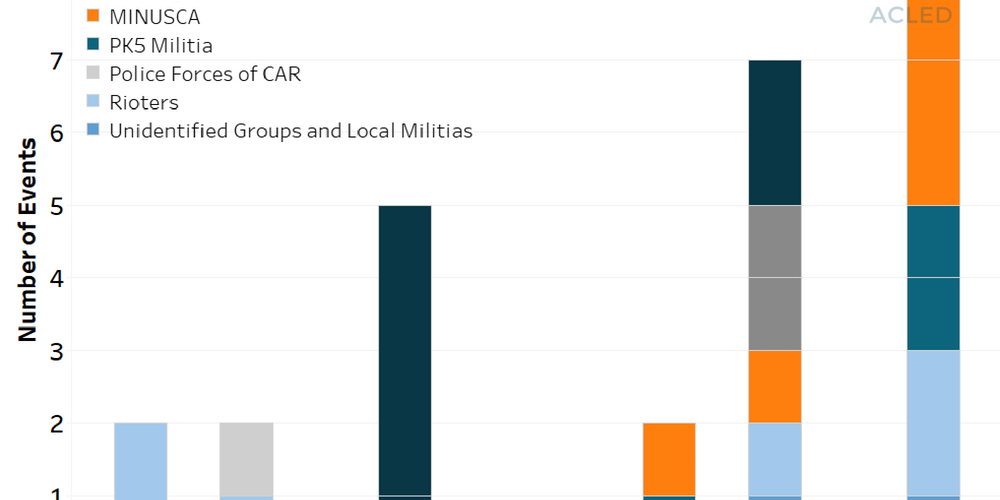Since the beginning of April there has been a dramatic escalation of violence in Bangui, the capital of the Central African Republic[1]. Most of this activity has been focused in the PK5 or KM5 neighbourhood – a Muslim area that is considered the economic heart of the city. The first clashes erupted when a local Muslim militia from PK5 attacked a UN MINUSCA patrol on 31 March (GardaWorld, 2 April 2018). Since this attack, the ‘PK5 militia’ has targeted MINUSCA and government installations, as well as the Catholic Fatima Church (The New York Times, 2 May 2018). In retaliation, Christian rioters burned down a mosque and lynched 3 Muslim civilians (New Vision, 3 May 2018).
With the incidents of religious confrontation in a Muslim neighbourhood within a majority Christian city, it is easy to frame the conflict as religious. However, the data indicates a diversity of actors and targets. From Figure 1 it can be seen that, while previous clashes in Bangui involved local groups (either unidentified or affiliated with PK5 or KM5) confronting each other over localised issues, violence in the past five weeks has engaged many more actors. In addition to attacking the MINUSCA patrol on 31 March, the groups have set fire to a police station, attacked a MINUSCA base near the presidential palace, and clashed with the military.
Although there is a strong religious element to the conflict, it is also driven by a number of other factors. The security and political situation have progressively worsened since the end of the French intervention, Operation Sangaris, and the election of Touadéra (ACLED, 9 December 2016). There is a growing sense in Bangui that the MINUSCA forces are ineffective – following one of the clashes in PK5, demonstrators carried the bodies of civilians killed in the confrontation to the MINUSCA headquarters in protest (Eyewitness News, 11 April 2018). Finally, the increasingly radical positions of the Touadera government, as well as the growing political role of mercenary units and Russian military support, are increasing tension with the secessionist groups in the North and East of the country (ACLED, 17 June 2017). This is reflected in the increased tension in Bangui. Rather than reading the upsurge of violence in Bangui as a religious confrontation, it should be considered in the light of a war-driven economy wherein multiple criminal elites are supported by international actors.
[1] I thank Olivier Valleé, economist specialized in African issue, for the pivotal insights he provided. This article owes much to his reflections.
AfricaAnalysisCivilians At RiskConflict MonitoringEthnic MilitiasFocus On MilitiasPolitical StabilityPro-Government MilitiasRioting And ProtestsUnidentified Armed GroupsVigilante MilitiasViolence Against Civilians






